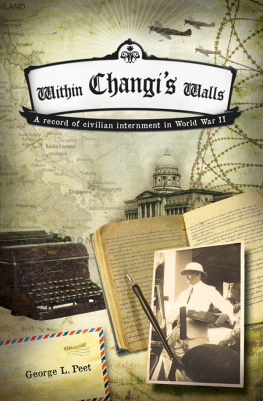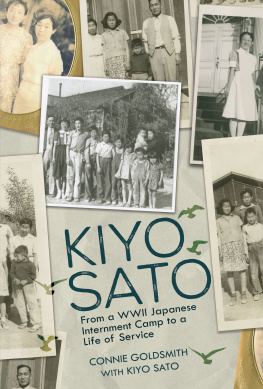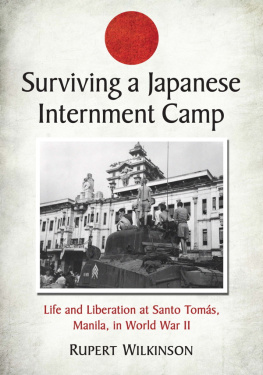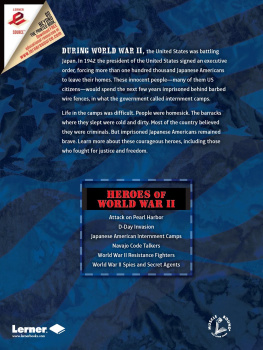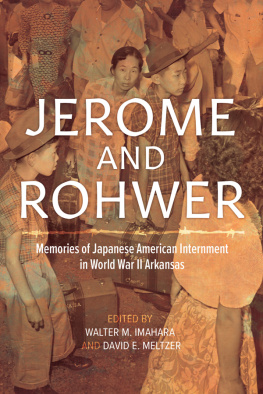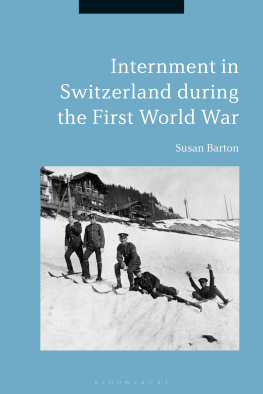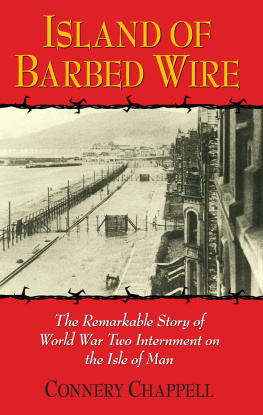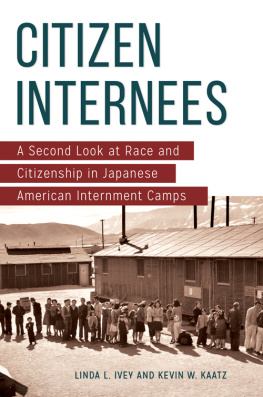
2011 Marshall Cavendish International (Asia) Private Limited
Published by Marshall Cavendish Editions
An imprint of Marshall Cavendish International
1 New Industrial Road, Singapore 536196
All rights reserved
No part of this publication may be reproduced, stored in a retrieval system or transmitted, in any form or by any means, electronic, mechanical, photocopying, recording or otherwise, without the prior permission of the copyright owner. Request for permission should be addressed to the Publisher, Marshall Cavendish International (Asia) Private Limited, 1 New Industrial Road, Singapore 536196. Tel: (65) 6213 9300, Fax: (65) 6285 4871. E-mail:
The publisher makes no representation or warranties with respect to the contents of this book, and specifically disclaims any implied warranties or merchantability or fitness for any particular purpose, and shall in no events be liable for any loss of profit or any other commercial damage, including but not limited to special, incidental, consequential, or other damages.
Other Marshall Cavendish Offices:
Marshall Cavendish International. PO Box 65829, London EC1P 1NY, UK Marshall Cavendish Corporation. 99 White Plains Road, Tarrytown NY 10591-9001, USA Marshall Cavendish International (Thailand) Co Ltd. 253 Asoke, 12th Flr, Sukhumvit 21 Road, Klongtoey Nua, Wattana, Bangkok 10110, Thailand Marshall Cavendish (Malaysia) Sdn Bhd. Times Subang, Lot 46, Subang Hi-Tech Industrial Park, Batu Tiga, 40000 Shah Alam, Selangor Darul Ehsan, Malaysia
Marshall Cavendish is a trademark of Times Publishing Limited
National Library Board, Singapore Cataloguing-in-Publication Data
Peet, George L.
Within Changis Walls : A record of civilian internment in World War II / George L. Peet ; edited and with an introduction by Emma G. Peet. Singapore : Marshall Cavendish Editions, c2011.
p. cm.
ISBN : 978-981-4328-85-2 (pbk.)
eISBN : 978 981 4677 24 0
1. Peet, George L. Diaries. 2. Changi POW Camp (Changi, Singapore) 3. Concentration camp inmates Singapore Diaries. 4. Prisoners of war Great Britain Diaries. 5. Prisoners of war Singapore Diaries. 6. World War, 1939-1945 Prisoners and prisons, Japanese. 7. World War, 1939-1945 Personal narratives, British. I. Peet, Emma G., 1968- II. Title.
D805.5
940.53175957092 -- dc22 OCN704887349
Cover photograph shows the author on his way to work at The Straits Times, c. 1938. Other images: SXC.hu (Andrew Eldridge, Shlomit Wolf, B.S.K., Kriss Szkurlatowski)
Cover design by Lock Hong Liang
Printed in Singapore by Times Printers Pte Ltd
CONTENTS

Letter from the author to his children in Australia, 1941
INTRODUCTION
My grandfather, George Lamb Peet, was born in Secunderabad, India, on May 27, 1902. He was born the son and grandson of poorly paid Methodist ministers and grew up in England following the ministers circuits. At schools end, the only affordable profession that attracted him was journalism, and Georges first placement was as junior reporter on the Essex County Standard in Colchester during the Great War.
In 1923 George decided to apply for a job as a junior reporter at The Straits Times in Singapore; he was successful in his application and was soon leaving Colchester and heading off to the unknowns of Asia. The salary was $300 a month as junior reporter; he covered such subjects as the crime beat, the courts and the municipal council of Singapore. It was like stepping into another world, he wrote, marked by social lines rigidly drawn down the years by colonial convention. Being the son of a Methodist minister, Grandpa was more conscious than most colonials of the injustice of discrimination and Singapore was certainly a far cry from his bedsit in Colchester this is a theme that you become aware of while reading his diaries.
Whilst living in Singapore, George met Lora Buel, an American teacher working at the Methodist Girls School. On May 23, 1930, they married in Kuala Lumpur, in the Wesley Church on Petaling Hill. They bore three children: George B., Lorinne and Ronald.
George worked in Kuala Lumpur in the early 1930s before being recalled in 1934 to the Straits Times head office in Singapore to serve as the Assistant Editor; after a time he rose to Acting Editor.
On September 3, 1939, George was seconded to the role of Director of Information in the Straits Settlements government, and thus became privy to highly classified information. In 1940, acting on confidential advice, George sent his wife and children to the sanctuary of the U.S.A.; this proved to be a life-saving decision. George himself remained in Singapore. After nine months Lora, wanting to be closer to her husband in Singapore, moved the little family to Bolingbroke Parade in Manly, New South Wales, Australia. George was to be re united with his family there whilst on four months leave in 1941, before again returning to his post in Singapore. This was to be their last reunion until the war ended in 1945. George wasnt able to flee Singapore before the fall as every fit man under 60 must stay and play his part in the defence of Singapore, the last remaining Europeans being evacuated only when it was realised that Singapore was to shatter and burn.
From my familys recollections, in February 1942 George boarded the Giang Bee, an old island freighter and one of the last to leave Singapore, with his second-in-command from the Department of Information as well as some newspaper colleagues. George in later years said that whilst on the ship he had a premonition the boat would be sunk and that he smelt the stench of death on the boats decks. At the risk of leaving his only route of escape behind him, he hailed a passing sampan and climbed aboard to return to the shellfire and the hell that Singapore had become, in the face of the invading forces.
Grandpas colleagues were on the other side of the boat and didnt see him alight from the ship. Devastatingly, the Giang Bee was bombed and sunk by the Japanese, with much loss of life, including many of Georges former colleagues. One of the few survivors happened to be Georges 2IC, and as George was one of the first men hunted by the Japanese, his companion was quickly captured and tortured by the Kempeitai the Japanese secret police to ascertain Grandpas whereabouts. Fortuitously he could not divulge the story of Georges survival as he had not seen him get off the boat, and it was assumed George had drowned and perished.
Once back on land, Grandpa headed to the Cathay building and took shelter in the basement. When the surrender of Singapore was imminent, he made his way back to his home at Mount Rosie, where he found an Australian machine-gun regiment taking refuge. There, after the British surrender, he was given an Australian privates uniform, and then marched in with the other Australian soldiers under the assumed surname of Dunphy, the name of his cousins in Australia. George grew a moustache and beard as disguise, and spent three months in an Australian Imperial Force (A.I.F.) camp. He must soon have realised that his English gents accent would sooner or later give his identity away, and somehow managed to get himself placed in the civilian camp at Changi Prison. He is still on the WWII Changi Prison Register as George Dunphy, not Peet, and with the occupation of rubber planter.
Lora had no news of her husbands survival for all of 18 months after the sinking of the
Next page
